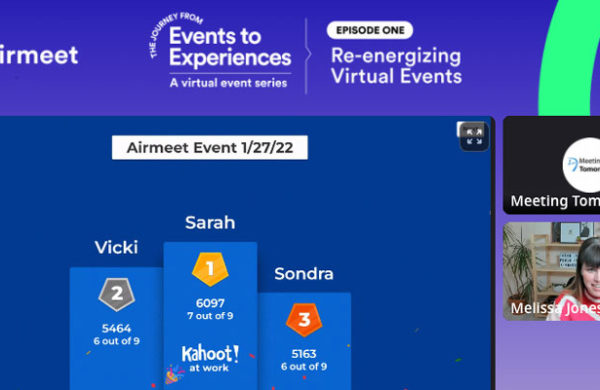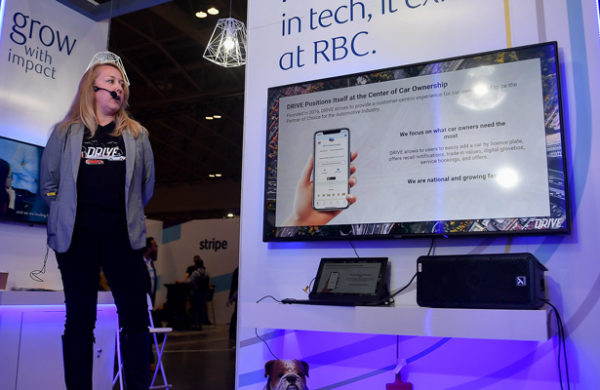
You’ve just wrapped an event. You’ve just completed months of planning, hundreds of emails and calls, and you’re buzzing with what was overall a huge success. Then you hop on the debrief call, and feedback starts to fly in all directions. Everyone’s focused on the hiccups, and you run out of time for the big picture insights that could really make a bigger impact next year.
This situation is all too familiar to Joey Rodriguez, Manager of Event Planning Services at Meeting Tomorrow. She’s seen it all and knows how to fix it. With 20 years of experience planning every kind of event imaginable, she knows how to set the stage for a productive, clear, and energizing debrief.
According to a Forbes Business Council analysis, only 23% of companies systematically capture and apply post-event insights to improve future event ROI. That means the majority miss critical opportunities for improvement because their debrief process lacks structure and focus.
In this guide, you’ll learn how to avoid messy debrief calls and run smarter, more productive post-event reviews. You’ll get a free event debrief template, expert tips from a seasoned planner, and practical strategies that make feedback more focused, useful, and action-driven.
Why Some Debrief Meetings Go Off the Rails
The biggest mistake we see event planners make is treating the debrief as an afterthought rather than an integral part of the entire event planning process.
Typically, everyone waits until the event ends to think about feedback, which means important details earlier in the process get forgotten and emotions run high.
Debriefs tend to be treated like the only space for feedback, which puts enormous pressure on a single conversation to capture everything that happened during weeks or months of planning and execution. This approach almost guarantees that important insights will slip through the cracks while minor issues get disproportionate attention. People zero in on surface-level details instead of systemic issues that could prevent bigger problems in the future.
5 Debrief Fixes Every Planner Should Know
These proven practices help you avoid chaotic calls and turn your post-event debrief into a powerhouse planning session.
1. Start the Debrief Process Before the Event
Set the debrief date during your kickoff call so no one’s surprised later. This simple step reinforces that feedback is part of the process rather than a reaction to problems.
Joey emphasizes the importance of preparation: “I like starting my debrief template or deck at the beginning of the planning process. Then, as the planning process goes on, I’m dropping notes in, and not waiting until the very end to remember everything.”
This approach to event planning transforms your debrief from a memory exercise into a strategic review based on documented observations throughout the entire planning cycle.
2. Review the Defined Goals
Review key goals and their outcomes at a high level. Grounding yourself in what the goals of event sets the foundation for the entire debrief that will come post-event. For example, if a primary goal was to increase attendee engagement, your debrief shouldn’t focus on the quality of the coffee. Instead, you’ll be asking questions like:
- How did our engagement-focused activities perform?
- Did we meet our target for social media mentions or app downloads?
- What feedback did we receive on the interactive sessions?
By grounding the conversation in these predefined metrics, your debrief will be set-up for a strategic tool for evaluating success and failure. Each action item that comes out of the discussion should tie back directly to a measurable outcome. This direct link ensures that your takeaways aren’t just good ideas—they’re actionable steps designed to move the needle on your most important objectives.
When your action items connect directly to measurable outcomes, your debrief becomes a strategic tool rather than just a conversation.
As Joey says, “My approach for anything is always make sure you are deeply understanding event goals, objectives, and KPIs.”
3. Include More Than Just Your Core Team
Include vendors, sponsors, and key behind-the-scenes staff in your debrief process. Broader perspectives lead to smarter takeaways that your internal team might miss. Use one-on-one conversations or written formats if some stakeholders can’t join the live debrief call.
Joey highlights the value of diverse input: “For example, is there a technical director I need to talk with? I need to know how this works best for each role to make the show even better for next year.”
These conversations often reveal operational improvements that dramatically enhance both the attendee experience and your team’s ability to execute smoothly.
4. Use a “Plus/Delta” Format
Structure your debrief conversation using “Plus” for what went well and “Delta” for what could be better next time. This format keeps the tone positive and focused while covering both successes and improvement opportunities systematically.
As Joey describes her approach, “We start with gratitude. Then, feedback is categorized and specific. Then, we end with saying how excited we are to elevate the event next year.”
This positive framework helps teams process constructive criticism without getting defensive, leading to more honest and productive conversations.
5. Don’t Wait—Hold the Call Within a Few Days
Debrief while the details are still fresh in everyone’s minds. Aim for within 7 days after the event, no more than seven. This timing helps you act on feedback before momentum fades and team members get pulled into other projects.
We’ve seen too many valuable insights lost because teams waited weeks to debrief. By then, the specific moments that could inform future improvements have become vague memories. When your event has unexpected issues, it can be tempting to give your team time to recover before dissecting what went wrong.
But it’s even more important to jump into debriefs. Just remember to give grace and remind team members that everyone is human. The purpose of the debrief is to protect the next event, not focus on who is responsible for mistakes.
6. End with Clear Action Items & Document in Your Playbook
Turn feedback into specific tasks with clear owners and deadlines. Track changes in your event playbook for next time. Use visuals whenever possible and include the data in a way that can be leveraged for stakeholder review and reference in the future. This approach builds accountability and shows that feedback matters by connecting it to concrete improvements.
The Ultimate Post-Event Debrief Checklist (With Free Template)
Before you jump into your next debrief, make sure your approach is aligned with event goals and KPIs, built to reflect the full event lifecycle rather than just day-of execution, structured to include the right voices and formats, focused on action rather than just feedback, and easy to revisit for next year’s planning.
Here’s what to include in your comprehensive debrief process:
Pre-Event Setup:
- ☐ Ensure your goals are defined, and you’ve set up your data collection methods and other tracking mechanisms
- ☐ Schedule your debrief call during the event kickoff
- ☐ Build your debrief template as you plan—drop notes in along the way
- ☐ Invite the right mix of voices: internal team, vendors, key partners
During the Debrief Call:
- ☐ Give attendees time to prepare in advance. Create and send out structured questions in advance so you’re not just getting what’s top of mind for people in the call.
- ☐ Use a Plus/Delta format to guide the call
- ☐ Avoid giving individual feedback in the group setting—save for one-on-ones
- ☐ Mix feedback formats: surveys, one-on-ones, and the main team call
- ☐ Hold your debrief within one to three days after the event
Organizing and Acting on Feedback:
- ☐ Organize feedback by theme (logistics, vendors, presenters, team communications)
- ☐ End the meeting with clear next steps, owners, and deadlines
- ☐ Document key takeaways in your event playbook
Core Discussion Questions:
- ☐ What goals did we meet—or miss?
- ☐ What feedback came from attendees, vendors, or staff?
- ☐ Where did communication break down?
- ☐ What should we repeat, refine, or retire?
Want a more detailed template and checklist? Download our free event debrief template.

Case Study: Transforming a VIP Gala Through Feedback
Here’s how one structured debrief transformed a high-stakes corporate event and created lasting improvements for future gatherings.
We worked with a client who hosted hundreds of VIP CEOs at a high-stakes gala. Despite the event’s overall success, Joey’s structured debrief process identified specific friction points in guest flow and logistics that were impacting the attendee experience.
3 Real Fixes from One Great Debrief
The systematic feedback collection revealed three vital improvements that became standard for future events.
- A hallway speaker system was added to improve communication flow between different event spaces.
- VIP liaisons were designated to provide personalized attention to top-tier attendees.
- Spontaneous meeting rooms were introduced for CEO chats that naturally emerged during networking periods.
These changes came directly from the structured debrief process rather than assumptions about what might work better. By the following year, attendee satisfaction scores increased significantly, and the client now uses these elements as standard features for all high-level corporate events.
Make Every Event Better Than the Last
When you treat the event debrief like an ongoing conversation rather than a chaotic call, you build a culture of insight, reflection, and growth. Be sure to start early, focus on team dynamics, and use structure to turn feedback into momentum.
The most successful event planners we work with view each debrief as an investment in their next event’s success. They create systems that capture insights throughout the planning process, involve the right stakeholders in structured conversations, and translate feedback into concrete improvements that compound over time.
Your event debrief template becomes more valuable with each event you plan. The patterns you identify, the processes you refine, and the relationships you strengthen through thoughtful feedback all contribute to a planning approach that gets stronger and more effective over time.
Want to maximize your event ROI? Download our free post-event debrief meeting template and turn post-event feedback into your biggest planning advantage.
FAQ About Post-Event Debrief Meetings
What are the key components of a successful post-event debrief?
A successful post-event debrief requires a structured approach that includes scheduling the meeting before the event begins, inviting key stakeholders and vendors, using a “Plus/Delta” format to organize feedback, holding the debrief shortly after the event while details are fresh, and ending with clear, actionable items.
What is an effective format to structure a debrief meeting?
Using a “Plus/Delta” format is highly effective. This structure guides the conversation by first identifying what went well (Plus) and then discussing what could be improved for next time (Delta). This approach keeps the tone positive and focused, allowing for honest and productive feedback without devolving into blame or defensiveness.
Why is it important to include vendors and sponsors in the debrief process?
Including vendors and sponsors provides a broader perspective that can reveal critical operational insights your internal team might miss. Their feedback can lead to improvements in logistics, communication, and technical execution, ultimately enhancing the attendee experience and making future events run more smoothly.



